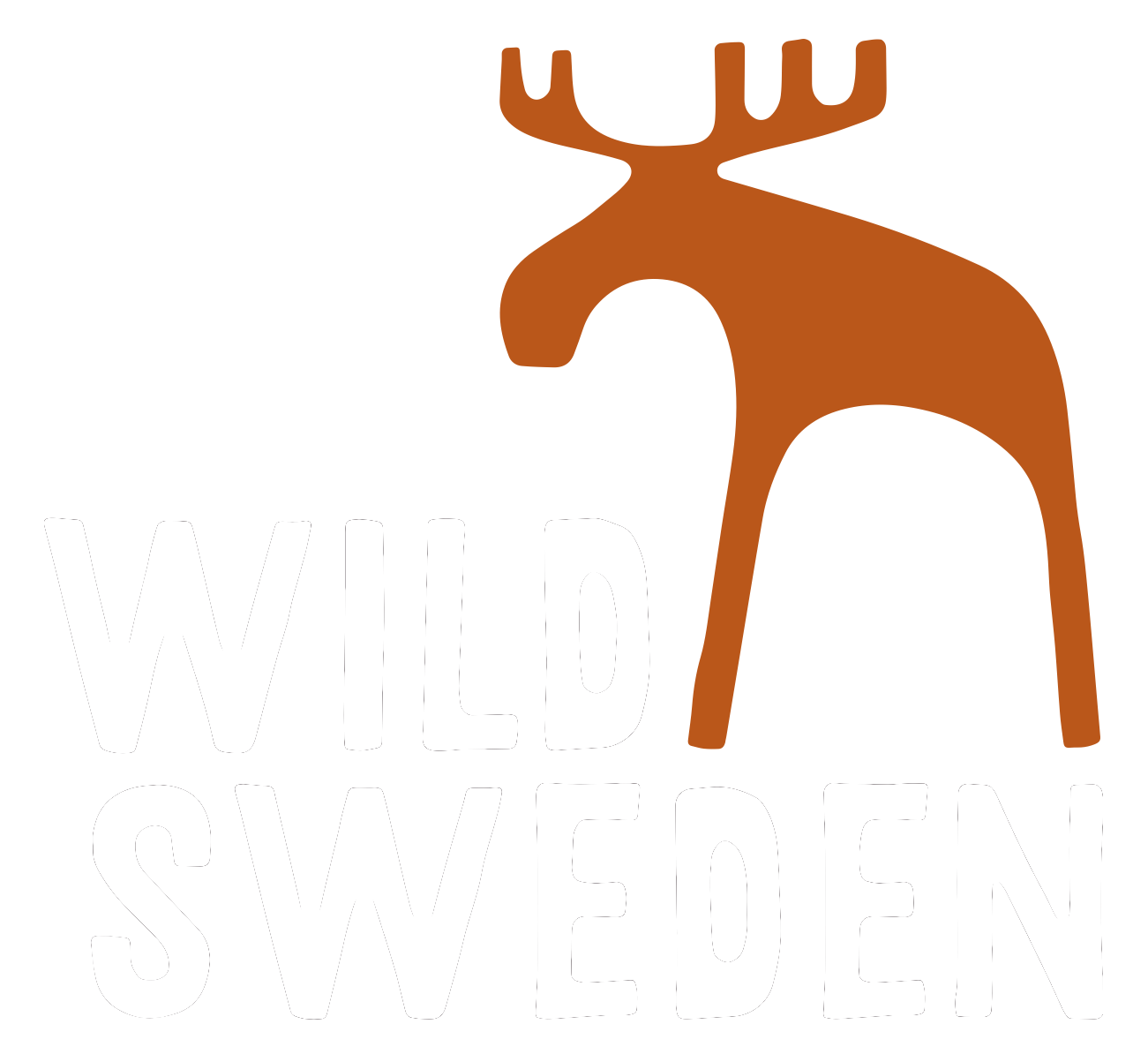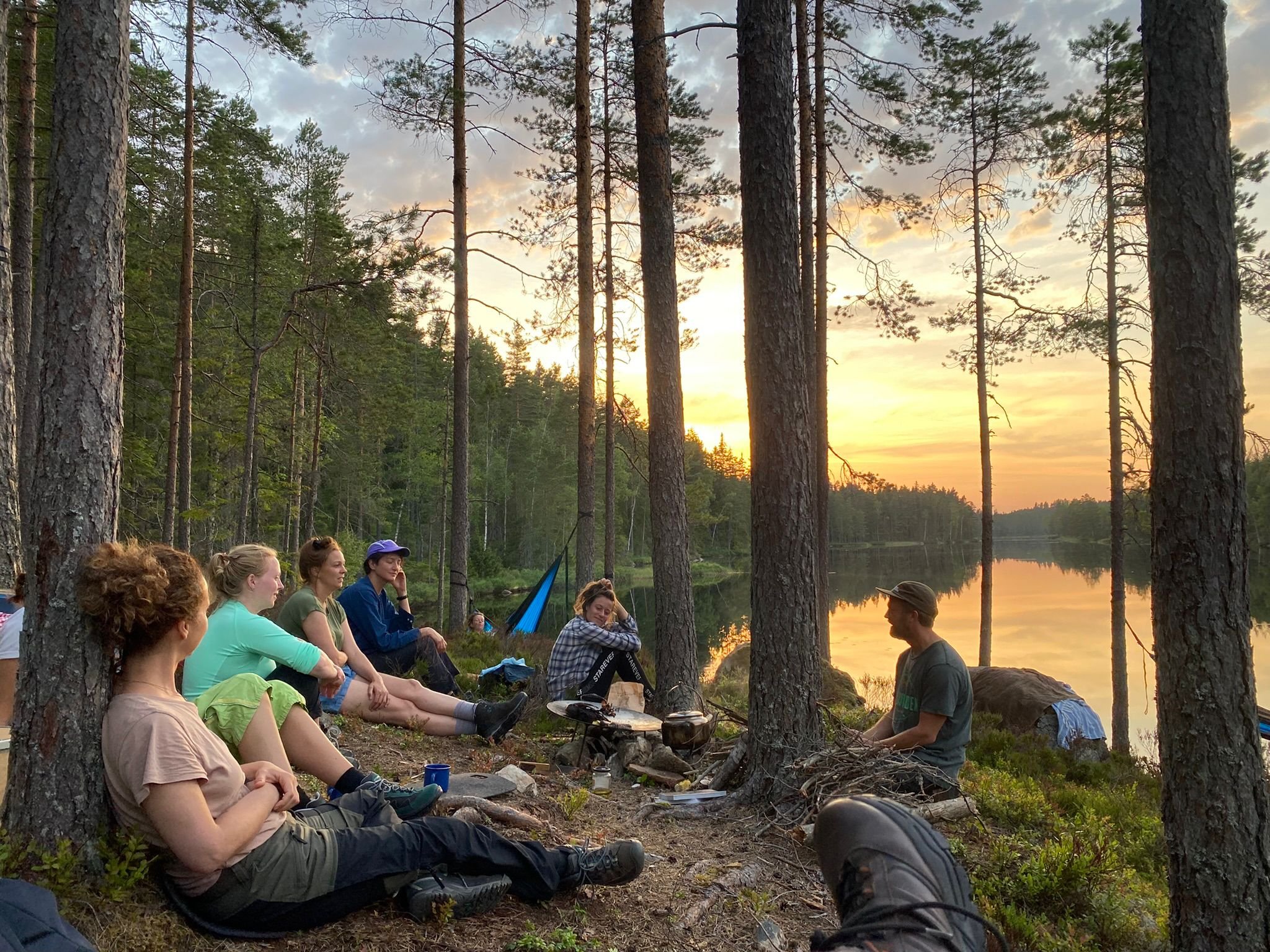Facts about Wolves in Sweden
This page is all about the grey wolf in Sweden and Scandinavia.
Scientific name: Canis lupus
Hunted to extinction
Wolves have always been hunted for their fur and to keep them away from domestic livestock like kettle and sheep. By the late 1800s, organised efforts to keep the wolf population low led to their eradication from most parts of Scandinavia and in 1960 they were officially claimed extinct.
the return of the wolf to Scandinavia
In the early 1980’s three Wolves migrated from the Russian-Finnish population all the way to the county of Värmland in Southern Sweden. These Wolves founded the modern Wolf population and multiplied successfully into about 200 individuals. Since then a few more Wolves have arrived from the Russian-Finnish population, which has been an important contribution to the population.
This diagram shows the development of the number of family groups (yellow), couples marking a territory (green) and the total number (dots).
This map shows the distribution of the Scandinavian wolf population with family groups (dots) and pairs without pups (triangles).
How many wolves are there in Scandinavia today?
Today the Scandinavian Wolf population consists of about 500 individuals divided into about 50 family groups, most of them located in the Southern half of Sweden.
The population has increased slowly but steadily in recent years, but the growth is controlled by hunting.
Wolves in Sweden and Norway are members of a joint cross-boundary Scandinavian wolf population. In both countries, the wolf population is monitored carefully by authorities, especially by tracking and collecting DNA from droppings during winter.
Wolves (back) are larger than coyotes (middle) and red foxes (front).
Illustration: NPS / Michael Warner
What is the size of a wolf?
Scandinavnan wolves reach up to 90 cm at shoulder.
Males weigh 35 – 55 kg and females are on average 10 kg lighter.
Scandinavian Grey Wolves are generally larger than wolves in Southern Europe, but smaller than wolves in Canada although they are the same species.
The male wolf in the Kölsta territory, Sweden. Photo: Mats Bentmar
What do Scandinavian wolves look like?
One often say that the wolf is grey, but at a closer look the fur is actually more a mix of white, yellowish and black. The chin and throat are almost always white.
Unlike many hunting and husky dogs that may look a bit like wolves, the Scandinavian wolves are never white above the eyes. They often have black markings on legs, in the face, along their back and a dot halfway down the tail. The winter fur is a lot thicker than the summer fur.
How long do wolves live?
Wolves rarely reach 12 years of age and most wolves die at a young age, even during their first year. Only one out of ten wolves that are born are estimated to make it into adulthood and have it’s own litter.
Just an example of how wolf territories may be distributes in Sweden
Do wolves live in packs?
Wolves live in family groups, sometimes called packs. A family group typically consist of two parents and their pups. Most of the pups disperse (leave) the family after twelve months, before becoming sexually mature. Some pups may stay for more than one year. These elder pups may act as baby sits and remain close to the pups of the younger generation.
How many wolves are there in a pack?
A wolf litter may consist of up to 10 pups, and if a couple of pups from last year stay around a wolf family may consist of up to 14 family members (2 adults + 2 elder pups +10 pups). However it is more commonly just 3-6 pups of the year and the pair which adds up to just 5-8 individuals.
What is a wolf territory?
A wolf pair keeps a distinct home territory where they typically stay for as long as they remain an intact couple.
The territory is marked out by urine, droppings, scratches and sound calls. They actively defend their territory against trespassing wolves. Fights between family members and trespassing wolves are not uncommon.
The size of a Wolf territory may vary considerably. A normal home territory measures 800 – 1 000 square kilometers which equals more than 140,000 football/soccer pitches. In rare cases the home territory can reach up to 2 000 square kilometers, but they can also be as small as 400 square kilometers. Access to food and surrounding territories are some of the factors determining the size of the territory.
Why do Wolves howl?
Wolves howl to communicate for many different reasons. They use various type of calls to communicate within the family group. It can be short calls or longer series of howls, yipping, wining or even barking.
Howls and barks are also used to keep other wolves out of their territory. The most characteristic howls is probably when the pack is howling together.
If you want to hear wild wolves howl you can join a Wolf howling tour.
Wolf by H Kuchera
When do wolves have pups?
The pups are born at the end of April or beginning of May. The mating season occurs by mid-February. The pups are born 63 days after the mating. A litter may consist of 1-10 pups. The pups weigh 400 grams at birth and in late autumn they have already grown to about 35 kg’s.
What is a wolf den?
During the first weeks after the pups are born they are kept inside or close to a den in which the pups have the chance to hide if danger occurs. This den can be a hole dug out in sand or just some rocks with cavities. They do not use the den during the rest of the year.
What does a wolf eat?
Wolves are carnivore and they prey on whatever is available and easiest to catch. In Sweden wolves mainly prey on moose, wild boar, roe deer and fallow deer but also Beavers, Hares, Badgers and Rodents.
Certain individuals may occasionally take Sheep and Reindeer but these are often soon killed in protective hunting.
Which enemies do wolves have?
The most common cause of death for wolves is by humans, both during organized hunts and illegal hunts. Wolves are also killed by cars and trains. Some wolves are killed by other wolves in territorial fights.
Do all dogs originate from wolves?
Yes, all dogs are descended from wolves. Dogs and wolves are actually the same species. The dog is just the domesticated form of the gray wolf.
In 1999, a study emphasized that while molecular genetic data seem to support the origin of dogs from wolves, dogs may have descended from a now extinct species of canid whose closest living relative was the wolf.
In general, the domestic dog is an extremely close relative of the grey wolf, from which it differs by only 0.04% in nuclear coding-DNA sequence.
More interesting facts about Wolves
A wolf pup’s eyes are blue at birth. Their eyes turn yellow by the time they are eight months old.
Wolves are the largest members of the Canidae family, which includes domestic dog, dingo, coyote, African hunting dog, several kinds of jackals and several types of foxes.
Wolves have an outstanding sense of smell with about 200 million scent cells compared with humans that have only about 5 million.
Wolves are good swimmers. At several occasions they have been seen swimming out to islands in lakes, and even across large rapid rivers during winter.
The wolf’s jaw force is sufficient to break open and crush bones with only a few bites. They are capable of a jaw pressure of up to 105 kilograms per square centimeter (1,500 pounds per square inch). This is about twice the jaw pressure of a German shepherd dog.
The jaws themselves are massive, bearing 42 teeth specialized for stabbing, shearing, and crunching bones. Their jaws also open farther than those of a dog.
Wolves can easily cover 40-50 kilometers in a day as they constantly move around their territory.
Nope, Wolves don’t howl more at full moon.
Wolves would not make good guard dogs because they are afraid of humans and would hide from visitors rather than bark at them.
Modern research shows that labeling a wolf “alpha” or “omega” is misleading because “alpha” wolves are simply parent wolves. Using “alpha” terminology falsely suggests a rigidly forced permanent social structure.
The prehistoric Dire wolves (canis dirus) lived about two million years ago. Now extinct, they were larger than the Grey wolf and hunted prey as large as woolly mammoths.
A wolf can run about 30 km (20 miles) per hour, and up to 60 km (40 miles) per hour when necessary, but only for a minute or two. They can trot around 8km (5 miles) per hour and can travel all day at this speed.
It is believed that the last wolf in England was killed in 1500 and that the last wolf in Ireland was killed in 1770.
The Japanese word for wolf means “great god”.








